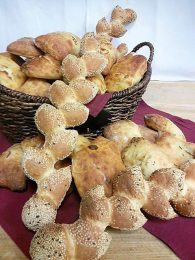- More than 800,000 Kansans do not have access to healthy, affordable food a reasonable distance from their home.
- More than 30% of Kansas counties are considered food deserts.
- Kansas is in the bottom five of states working to reduce food deserts.
The Kansas Healthy Food Initiative (KHFI) wants to improve access of food to Kansans. The KHFI is a public-private partnership with the goal of improve access to food and improve underserved Kansas communities.
The KHFI will provide technical assistance and financing to those wanting to start a food retail operation or improve existing operations. Besides grocery stores, other projects that can apply include farmers markets, co-ops, production and distribution operations. All applicants are encouraged to accept SNAP and WIC benefits. Financing will be given through loans, forgivable loans, grants, or a combination of the three.
To learn more about this program and how food operations can apply, go to http://kansashealthyfood.org/ or contact the Center for Engagement and Community Development at 785-532-6868 or khfi@k-state.edu.






